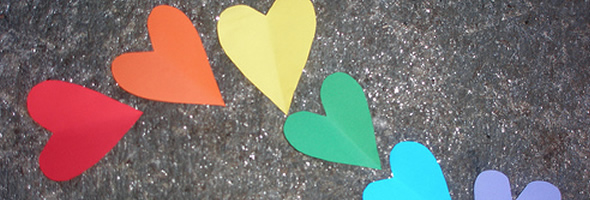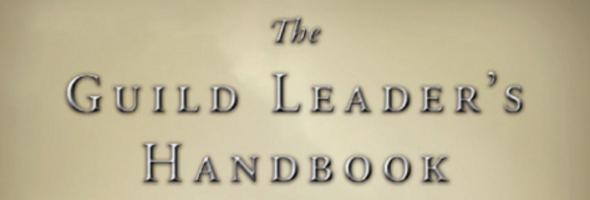
This article, including the title, is inspired by some of the comments on yesterday’s post from Matticus about gauging the success of raiding guilds. I thought that the issue of women and raiding, which appears on the original checklist, deserved its own post. However, I am quite aware that every time a blogger makes a post about gender and raiding, he or she gets excoriated in the comments. Gender issues–and more particularly, women’s experience in WoW–has a tendency to cause temperatures to rise. On the one hand, some commenters protest that there’s no gender-influenced experience in the game. Men and women play exactly the same way, and after all, women are just men with boobs. Still others complain about the bad behavior of women players, claiming that they’re princesses, bitches, or femmes fatales who love to take advantage of gullible men. Another group, mostly women posters, laments the poor treatment they’ve received in the past. I do realize what the comments for this post will look like, but I’m going to give you my take on the gender issue anyway. After all, I didn’t start blogging because I don’t like to speak my mind!
First off, I’ll tell you my overall stance on the issue. I would like to forward the radical notion that women raiders are people. By this, I mean that they are multi-faceted, flawed, and idiosyncratic, just like male raiders. However, women and men are not the same, neither in the game nor in life. We are each influenced by our culture, and how culture treats each of us has a lot to do with gender.
However, I also think that WoW is unique in that it lets us perform–or not perform–our biological sex as we like. I do, by the way, subscribe to Judith Butler’s notion that gender, in general, is performative. By this I mean that what men are, and what women are, is a collection of behaviors that individuals may or may not subscribe to. It is possible, if difficult, in society to “perform” a gender that does not conform to one’s biological sex. In WoW, it is incredibly easy to do so–after all, how many men play women characters? This doesn’t make them weird–they are just taking advantage of one of the fun and imaginative aspects of gameplay. Women occasionally roll male toons as well. I know I personally used to borrow Briolante at level 60 because I liked tanking more than healing and was too lazy to level a warrior of my own. All this is to say that virtual environments like WoW allow us to have a more abstracted approach to gender performance. We can perform differently though our avatars, through guild chat, and through vent–and all of this adds up to some really interesting situations.
At some point, I think I’ll do a whole post on men who play women characters, but for today, I’m really interested in whether women ACT like stereotypical women in the game, and how they go about doing so.
In order to really explore this question, I’d like to look at some of the most common generalizations about women in WoW and share how I respond to each of these issues. I’m not trying to be representative of all women here–as always, I only represent myself. Take from it what you will.
Stereotype #1 Women Are Bad Players
I have put this stereotype at the top of my list because to me, it’s the least true of all. This idea comes from a cultural bias. It’s true enough that video games aren’t often considered toys for little girls, and many women raiders (including me) probably grew up watching our brothers play video games. But you know what? I can sure as hell play WoW now. The #1 thing that gets my goat in terms of stereotypes about girl gamers is the idea that I can’t play my toon because I have boobs. Maybe they get in the way? I’ll assure you, it’s not a problem for me or any of the other girl raiders I know. Estrogen doesn’t cause my addons to fail, and it sure doesn’t entice me to turn with the keyboard. The truth is that there are good and bad players of both genders. Women might be slightly more noticed when they lack skill because that’s what people expect. There’s a natural human bias toward finding examples that correspond to one’s expectations. That doesn’t mean that the old hackneyed ideas are correct–far from it.
Stereotype #2 Women Get Offended Easily
I’ve followed up the least true stereotype with the one that is most true, especially in the context of WoW. Women’s experience of the world is a little different from men’s. A lot of us face gender-related challenges at home or in the workplace. I know I’ve been treated differently all my life–by parents, college, work, relationships–than my brother, and we’re really similar in ability, personality, and upbringing. I can’t generalize what kinds of behaviors bother all women, but I will share the things that do and do not annoy me in-game.
1. Epeen
Some people think women are offended by in-game boasting, but I don’t mind. I’m not sure if I’m typical or not for a woman raider, but I do think that I’m not a participant in the all-boys-big-epeen-club. I don’t mind it, though. When the boys are jockeying for position on the meters, or for the main tank spot, I think that’s funny, maybe even charming. It’s good to have something to strive for.
2. Foul language
I’m not bothered by foul language. Most of those 4-letter words don’t offend me at all, because they refer to things that are universal. For example, anyone can be an asshole, regardless of gender, religion, social class, or race. Therefore, it’s ok by me to see that word–and a host of others that Matt wouldn’t let me write on the blog–in guild or raid chat.
3. Discriminatory or harrassing language
On the other hand, I am extremely upset by racial or religious slurs, and also by “rape” comments directed at female bosses. I don’t like anti-gay language at all either. I think for me, the language question is all about whether it’s hurtful to somebody specific. However, I’m not offended by this type of language because I’m a woman. It’s my life experiences–my job, my friends, my politics–that make me think the way I do about discrimination. It has nothing to do with gender.
4. Being treated like a sex object
I almost never have to deal with this problem. I am never flirtatious in guild chat or whispers, and it annoys me when women behave that way. I’d rather not have my raiding–or instancing, or whatever–be about sex in any way shape or form. But the few times someone–always someone I don’t know–has made a lewd comment to me have really pissed me off. Mild flirting is ok, and I can see how it could certainly enhance a single woman’s experience of the game, but I make it pretty clear to my guildmates that I’m taken.
Stereotype #3: Women are troublemakers
I will amend this one to people are troublemakers. I’ve seen men whine over meaningless things, and I’ve seen women do it to. I’ve seen both genders start dumb arguments over nothing, and I’ve witnessed both genders do their part to break up guilds. WoW players have a tendency to QQ, whether on the official forums or in guild chat. It has very little to do with any certain demographic.
Stereotype #4 Women hate each other
We’ve all seen those tv shows where catty women waggle their fingers and scream at each other without apparent cause. I think that women raiders tend to get along quite a bit better than that–or at least, we’re polite on the surface. I don’t know quite what it is, but competition style does seem to me to be influenced by gender. The men post damage meters, and the women make snide remarks to each other about other women. I’ve met and played alongside women who consider WoW a boys’ club with room for exactly one girl. That’s not me. I feel a lot of solidarity for other women players and I am much more likely to promote and encourage them than criticize them. I don’t get jealous or competitive with other women–I want them to keep playing, more than anything else, so I don’t have to break into the All Boys Treehouse–No Girls Allowed.
Stereotype #5 Women want free stuff
I see this one pretty often, and it really puzzles me. I consider men and women equal. I expect to pay full price for everything I get or buy. I don’t want preference on loot, and I don’t want free money. Now, if you want to give me some greens because I’m leveling enchanting and giving free enchants to guildies on the way up, awesome! I’ll take them with thanks. But if you send me a gift because I’m a woman? I’m sending that crap right back. I have to think that most of the stories of women getting free loot/gold are the virtual equivalent of urban legends. Sure, somewhere there was a basis in truth, but it’s not a widespread occurrence.
Stereotype #6 Women love cute things
Hearts. Puppies. Rainbows. Flowers. Hugs. Lolcats. Yes, I adore these things. And it’s not just me! In my former guild, Eieldin, a female hunter, had a very enviable collection of non-combat pets–before everyone was collecting them. Jesmin, also of my former guild, told even more cat stories than I do. However, I am of the opinion that deep down, everyone loves cute. The object of our adoration may vary, but everyone has a soft spot. What was the one thing that convinced me that Kimbo, Conquest’s raid leader, had to be a nice guy underneath the gruff exterior? He owns a cat. In terms of the game, I play for aesthetics during my casual time. I dress up my bank alts in pretty dresses, and I get a lot of haircuts on my lowbie characters, but you know what? All of that goes out the window when I’m raiding. I put away my little dragons and kitties, shift into Rotten Broccoli form, and get down to business. During downtime, though, I’ll be asking Kimbo about the latest thing his cat did. Kimbo’s cat is awesome.
Conclusions
One of the things I appreciate about Conquest is that, rude and crude as some of the boys are, I’m not treated like a sex object or a giant bitch. In fact, I’m neither. I am myself, full of quirks and foibles. I can do my job a well as anyone else can. The great thing about WoW, and gaming in general, is that men and women have equal potential. Performance in the game doesn’t come down to upper body strength, and all of us can learn how to play our characters at a very high level if we want to put in effort and time. It saddens me that some people have preconceived notions about women gamers, especially when the game world does such a nice job of leveling the playing field. Our virtual representations, our avatars, erase differences–they blur out class, race, religion, creed, and even gender. Heck, the slang and leetspeak so commonly seen in WoW even erase differences in education. You never know who’s behind the computer, and I like it that way. Here’s hoping that the potential for equality someday becomes a reality, if not in WoW, in the next generation of MMOs.

